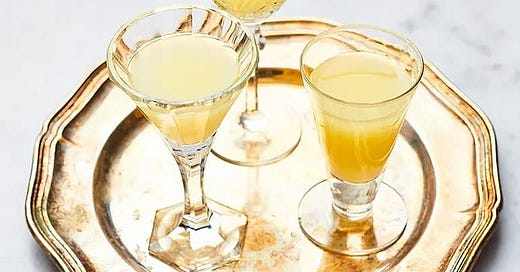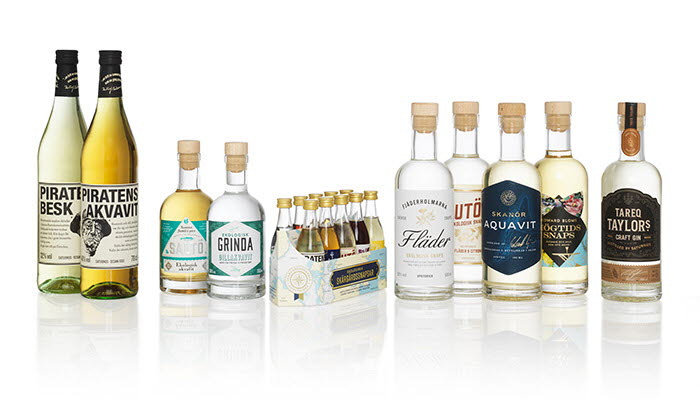All about Swedish Snaps
Explore the flavors of blackcurrant, citrus and elderflower, and cumin, anise and fennel
Note: This article is meant to share interesting cultural traditions and flavors, it is not meant to promote any particular products or habits.
Swedish snaps is far more than just a drink, it’s a cultural institution, a symbol of festivity and a cherished part of Swedish identity.
History and Cultural Significance
Snaps, known in Sweden as “brännvin” or aquavit, has roots stretching back to the Middle Ages. Initially, spirits were distilled for medicinal purposes, but by the 16th century, snaps, flavored with herbs and spices, had become a staple at Swedish tables.
The word “snaps” comes from the German “Schnapps”, meaning a small sip. In Sweden, it specifically refers to the flavored aquavit served during festive meals.
Snaps is much more than a drink; it is a symbol of togetherness and tradition. It brings generations together around the table, creating lasting memories. The tradition is closely tied to moderation and shared enjoyment, rather than excess, reflecting the Swedish approach to alcohol — celebrated but controlled.
The ceremony surrounding snaps was born in academic and bourgeois circles in the late 19th century. Today, snaps and snaps songs are most commonly enjoyed during holiday meals, such as Christmas, Easter and Midsummer, as well as “snaps-friendly” holiday foods like herring, crayfish and surströmming.
Holidays and Celebrations
Midsummer
Perhaps the most iconic snaps occasion, Midsummer is celebrated with a smorgasbord of herring, new potatoes and snaps and accompanied by singing and dancing.
Christmas
The Julbord (Christmas table) features an array of dishes, with snaps served alongside herring, salmon and meatballs.
Easter
Similar to Christmas, Easter is marked by festive meals with snaps and traditional foods.
Crayfish Parties
Late summer crayfish parties are another occasion for snaps, with singing and toasting.
Types of Snaps
Swedish snaps comes in a wide variety of styles, each flavored with different herbs, spices and botanicals. The most traditional snap is aquavit, which must be distilled with caraway or dill according to EU regulations. However, Swedish snaps can include a broader range of flavors.
Traditional Aquavit (Brännvin)
Caraway, Aniseed and Fennel: The most common flavor profile, found in brands like O.P. Anderson and Skåne.
Other Herbs and Spices: Thyme, rosemary, honey, mint, raisins and lemon are also used to create unique flavors.
Modern and Artisanal Snaps
Fruit flavored snaps: Some modern brands like Flävar offer snaps with flavors such as strawberry and lime, raspberry and liquorice and salted caramel.
Regional varieties: Different regions in Sweden have their own recipes, often using local botanicals and aging techniques.
Popular brands and flavors
Swedish snaps is produced by a variety of brands, each offering unique flavors and styles. Here are the most popular:
O.P. Anderson
Key flavors: Caraway, aniseed, fennel
Notable features: Sweden’s oldest and best-selling aquavit
Bäska Droppar
Key flavors: Wormwood
Notable features: Bitter, traditional snaps
Gammal Norrlands Akvavit
Key flavors: Caraway, aniseed, fennel, sherry
Notable features: Spicy, with a splash of sherry
Kryddgårdens Flädersnaps
Key flavors: Elderflower, lemon
Notable features: Floral and citrus notes
Läckö Castle Aquavit
Key flavors: Dill, coriander, cumin
Notable features: Herbaceous, regional variety
Örtagårdsbrännvin
Key flavors: Thyme, lemon, rosemary
Notable features: Herbal and citrusy
Check out some tastings
Start at 1:30
Elderflower, St. Germain
Honey, russin in bourbon barrels
Bitter drops, wormwood, malort, cinnamon, bitter orange
Herb garden liquor, rosemary, citrus
Ecological, orange creamsicle, bitter orange, cinnamon, cognac
Swedish snaps is a tradition steeped in history, culture and flavor. From its origins as a medicinal spirit to its current role as the centerpiece of festive meals, snaps embodies the Swedish spirit of togetherness and celebration.
Note: This article is meant to share interesting cultural traditions and flavors, it is not meant to promote any particular products or habits.








I don't think my life will be complete until I attend a Swedish crayfish party.